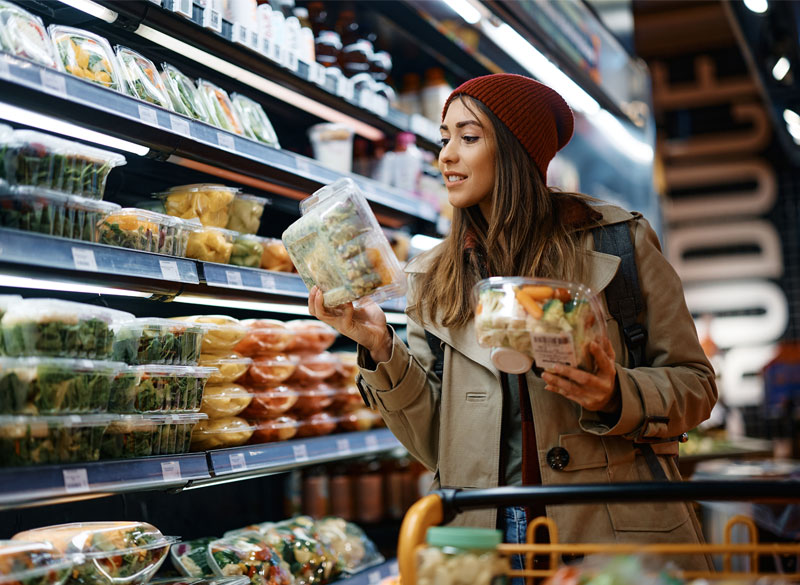Knowing What We Eat is Our Right!

For many of us, easily accessing reliable food and implementing a healthy eating plan has become a significant priority. The path to achieving this involves having proper food literacy, which means understanding food labels. We discussed what this concept entails and debunked all the misconceptions with Prof. Dr. Sibel Özilgen.
Every day, we come across brand new products on the supermarket shelves. In fact, most of the time, our shopping arrives at our doorstep with just a single click. When it comes to convenience, this accessibility is great, but being a conscious consumer is now even more important... The way to become a conscious consumer is through having good food literacy, which means understanding and critically evaluating various nutrient groups mentioned on labels. We talked about this topic with Prof. Dr. Sibel Özilgen, who is not only a food engineer but also the Head of the Gastronomy and Culinary Arts Department at Yeditepe University.
There is a lot of misinformation about sustainable food production and consumption. As a result, consumers worry about their food and struggle to make the right decisions for themselves and their loved ones. Food literacy refers to the ability of consumers to read food ingredients accurately, understand labels, and interpret technical and scientific data. Food labels serve as the most fundamental bridge between foods and consumers. It's necessary to make reading and interpreting labels a habit...
Based on their intended uses, food additives can be categorized into four groups... The first group includes preservative additives that extend shelf life. Antioxidants and organic acids are the most well-known preservatives.
The second group consists of additives that provide color, flavor, or enhance the strength of the food. They are added to make the appearance and taste more appealing to consumers. Many of these additives are natural... The majority are obtained from foods with intense color pigments like carrots and beets.
Another group aims to increase the nutritional value of the food or replace lost nutrients during processing. This includes foods fortified with vitamin D, such as fortified milk and dairy products...
Thickeners, anti-caking agents used especially in baking and bread industries, acid regulators, and moisture retainers that prevent foods from drying out are added to expedite and facilitate the food processing.
The use of food additives beyond the quantities determined by scientific studies and regulated by laws can lead to serious health issues. Using them without proper approval from regulatory agencies, beyond legal limits, is definitely dangerous... For instance, using monosodium glutamate or saccharin beyond established limits can potentially lead to cancer. We must avoid unchecked products, read labels, and look for the ministry's logo and the number starting with TSE on the label.
Food producers are required to list the food additives they use on the packaging... It's also important not to exceed the recommended consumption amount. There's a big difference between eating a spoonful of chocolate hazelnut spread and consuming jar after jar in one sitting and making it a routine. In such cases, these additives can indeed become harmful.
The permissible daily dosage of food additives is calculated in milligrams per kilogram of body weight. A maximum daily amount that can be consumed with no adverse effects over a lifetime is determined. Usage amounts vary for different foods. While a certain additive might be allowed in one food, it might be restricted or have a different usage dosage in another.
In European Union (EU) countries or countries engaged in trade with the EU, food additives are indicated with an E number (code). For instance, E260 symbolizes acetic acid, and E170 represents calcium carbonate. An E code assigned to a food additive signifies that it has undergone safety tests, received approval for use within the European Union, and its usage quantities have been determined.
The information about where and how a product is produced is also important... For example, the control of products with geographical indications is ensured through national and/or international legal regulations. In Turkey, the Industrial Property Law regulates the registration, control, and protection of products with geographical indications.
From the perspective of promoting international trade, the European Union (EU) has a comprehensive legal framework that protects products with geographical indications. The use of a logo is mandatory on products with geographical indications to inform consumers, facilitate traceability, ensure quality assurance, and streamline inspection activities. Consumers should always check the registration and logo of products labeled as having geographical indications.
In Turkey, important projects such as "Protect Your Food," "Take Charge of Your Table," "Food Literacy Strategy and Action Plans," conducted by the Ministry of Agriculture and Forestry and FAO, have been developed. Their common goal is to provide consumers with the knowledge of reading and interpreting labels, impart information about sustainable food production and consumption, and enhance awareness of food safety.
Click for the Details of the News